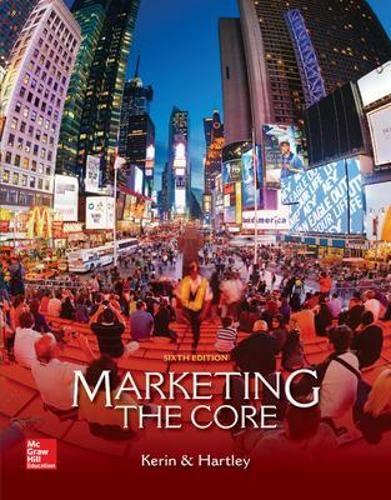1 Identify the consumers who are most likely to buy your productthe primary target marketin terms of...
Question:
1 Identify the consumers who are most likely to buy your product—the primary target market—in terms of
(a) their demographic characteristics and (b) any other kind of characteristics you believe are important.
2 Describe (a) the main points of difference of your product for this group and (b) what problem they help solve for the consumer in terms of the first stage in the consumer purchase decision process in Figure 4–1.
3 For each of the four outside boxes in Figure 4–4 (marketing mix, psychological, sociocultural, and situational influences), identify the one or two key influences with respect to your product.
This consumer analysis will provide the foundation for the marketing mix actions you develop later in your plan.
THE COMPANY AND GROUPON CONCEPT Mason started with a website called ThePoint.org, which was designed to organize campaigns, protests, boycotts, and fund-raising drives for important social issues. ThePoint was not successful but it provided the concept of making offers that are only carried out if enough people commit to participate in them. With that idea Mason launched Groupon in October 2008 with a twopizzas-
for-the-priceof-
one offer at the Motel Bar, located in the same building where ThePoint rented space. The concept quickly grew in Chicago and Groupon expanded into other U.S. cities and then into other countries.
Today Groupon is available in 375 American cities and 48 countries, and its subscriber base has grown from 400 in 2008 to 200 million today. In its fourth full year of operation, Groupon generated $5.4 billion in gross billings.
Part of Groupon’s success is the simplicity of its business model—offer subscribers at least one deal in their city each day. The unique aspect of the concept is that a certain number of people need to buy into the offer before the coupon discount is valid. Approximately 95 percent of Groupon offers “tip,” or reach the number of buyers required by the merchant. Once the minimum number is met, Groupon and the merchant split the revenue. For example, a yoga studio might offer a $100 membership for $50 if 200 people participate in the offer. Once 200 consumers have indicated interest, the deal “tips” and Groupon and the yoga studio each receive 50 percent of the revenue. Everyone wins. Consumers receive an exceptional value, the merchant obtains new customers without any advertising cost, and Groupon generates revenue for creating value in the marketplace.
Many of the deals have generated extraordinary demand.
The Joffrey Ballet, for example, sold 2,338 season subscriptions, doubling its subscriber base in one day!
Similarly, consumers purchased 445,000 Groupons offering
$50 worth of merchandise for $25 at the Gap and 6,561 tickets to a King Tut exhibit in New York’s Times Square for half price at $18 apiece. The most popular offering so far was a $25 ticket for an architectural boat tour in Chicago for $12. Groupon sold 19,822 tickets in eight hours! The company’s attention to customer satisfaction ensures success stories like these. “We have a policy called ‘The Groupon Promise’ that any customer can return a Groupon, no questions asked—
even if they used it—
they feel like Groupon has let them down,” explains Mason. Groupon’s success has attracted many more merchants than it can accommodate.
In fact, only about 12 percent of all merchants that contact Groupon are selected to offer a deal.
Questions
1 How has an understanding of consumer behavior helped Groupon grow from 400 subscribers in Chicago in 2008 to 200 million subscribers in 48 countries today?
2 What is the Groupon Promise?
How does the Groupon Promise affect consumer’s perceived risk and cognitive dissonance?
3 Describe the five-stage purchase decision process for a typical Groupon user.
4 What are possible psychological and sociological influences on the Groupon consumer purchase decision process?
5 What challenges does Groupon face in the future? What actions would you recommend related to each challenge?
Step by Step Answer:






